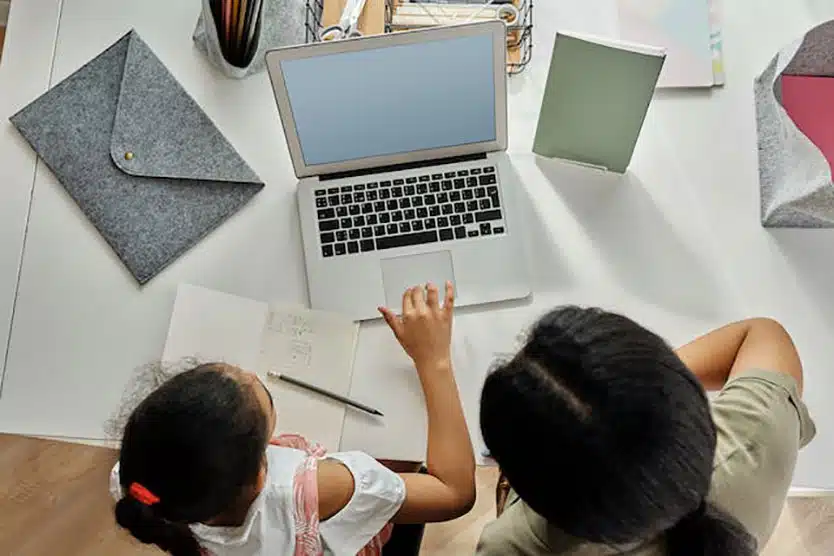
For parents, measuring their children’s progress in coding lessons may be trickier than it seems at first. What is the metric for success? The answer is perhaps philosophical.
A subject involving STEM skills often uses numbers or statistics, but not everything can be quantified so neatly. Let’s look closer at the considerations parents should take when assessing how their children fare in programming.
Parents have multiple motivations for enrolling their children in online programming classes. In a practical sense, children who know how to write code enjoy improved problem solving skills, which helps them later in school and at work.
Preparing kids for the world of the future, which is only becoming more digital, is one of the top reasons kids enroll in coding classes. Parents love the enhanced classroom performance associated with learning the underlying math skills needed to code, like vectors, integers, and even trigonometry.
However, RP4K stresses fun above all in our classes, and parents should understand that after-school programs for kids need to be enjoyable first and foremost. Is your child enjoying the classes? Fun is hard to quantify, but nobody is better positioned to understand if their child is having fun than their parents. That doesn’t mean it’s easy to gauge, though.
Learning to program involves acquiring new skills and ways of thinking, and this can be like conditioning a new muscle that hasn’t been exercised much before. In the way working out makes a muscle feel gentle soreness, after any friction in the learning process fades, it’s replaced with confidence and strength.
Our classes are deliberately kept small, limited to four students per session, so kids get all the support and attention from teachers they need. We set it up this way because the class material can be challenging at times but never overwhelming.
“Fun” isn’t frivolous! We orient our live online coding courses around how to build video games so kids are motivated to absorb coding skills and enjoy their learning journey. If they’re excited for each session, parents can tell they’re having fun.
Young kids can begin learning programming languages such as Python, the language used by popular streaming platforms like Netflix. While kids start with actual coding programs, not drag-and-drop software meant to approximate what coding is like, there is considerable room to advance within each language before graduating to the next.

RP4K is proud to teach students how to go deep in several languages, all of which are in demand in the industry. Here’s a list of the coding languages RP4K teaches:
Kids learn how to design and code Pac-Man-like video games right from the start, and from there, our sessions go deeper into each language before moving to ones that give them more freedom to turn their imagination into reality.
Naturally, choosing the right coding class for your child helps ensure they’re both challenged but not overwhelmed.
If you’re unsure of which RP4K class is most suitable for your child, given their skills and experience, don’t hesitate to contact us and book a free trial. We have lessons for all levels, but it’s essential they be placed in the right one, or they may be too bored or struggle with the challenging material.
Nobody knows how the lessons are going better than your children taking them! Probing the people in the class is the best way to assess how they like it and what they’re learning. However, there are different ways to put the question.
Parents can ask their kids to describe what they’re learning and see their facial cues in addition to listening to the responses. Ask them to imagine they’re writing a letter to a friend that describes what the class is like. What concepts are they learning? What’s some of the new vocabulary they’ve learned? What is one challenge and one fun concept they’ve learned?
There are different ways to pose the question, but bear in mind that there are also different ways they may answer. For example, amusement park rides provide a different type of pleasure for kids than learning new, stimulating, and fulfilling material.
One of the most exciting for kids learning to program is creating a video game that they can play afterwards with friends and family. RP4K harnesses gamification dynamics in the classroom to make programming video games as enjoyable as playing them, but playing them is also very fun!
In a very real sense, you’ll be able to see their progress as the video games they create become gradually more sophisticated. The first game they’ll create is fun but two-dimensional. Kids love learning how to expand their knowledge and create better games, and you’ll see the result first-hand when you play the games.
If you’re wondering how your child is faring in our program, you can see the sessions for yourself! We record all our classes so students can rewatch them for learning purposes while parents can observe what the sessions are like.
Such a window into the classes lets parents witness how their child takes to the course material and how they interact with both their teacher and fellow students. Watch them thrive and absorb the material.
Kids know if they’re having fun, but parents can also see it on their faces at the time. Since we started teaching kids coding classes in Toronto over 20 years ago, we’ve hired undergrads in computer science and computer engineering to teach small groups, finding this a winning recipe for effective classes.
We encourage you to watch them so you can see for yourself.
Thankfully, no tech or STEM jargon is required, when it comes to understanding how much coding kids are learning and how much fun they’re having doing so. We could tell you about their progress in learning complex procedures in advanced programming languages, and that’s a great way to know, too. There’s no substitute for speaking to your child, playing their games, and reading the joy on their face while they’re learning.